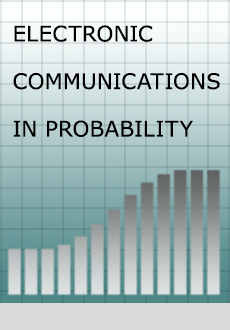Abstract
For a given set of random variables $X_{1},\ldots ,X_{d}$ we seek as large a family as possible of random variables $Y_{1},\ldots ,Y_{d}$ such that the marginal laws and the laws of the sums match: $Y_{i}\,{\stackrel {{d }}{=}}\,X_{i}$ and $\sum _{i}Y_{i}\,{\stackrel {{d }}{=}}\,\sum _{i}X_{i}$. Under the assumption that $X_{1},\ldots ,X_{d}$ are identically distributed but not necessarily independent, using a symmetry-balancing approach we provide a universal construction with sufficient symmetry to satisfy the more stringent requirement that, for any symmetric function $g$, $g(Y)\,{\stackrel {{d }}{=}}\,g(X)$. The same ideas are shown to extend to the non-identically but “similarly” distributed case.
Citation
Robert Griffiths. Kais Hamza. "A universal approach to matching marginals and sums." Electron. Commun. Probab. 25 1 - 12, 2020. https://doi.org/10.1214/20-ECP357
Information





